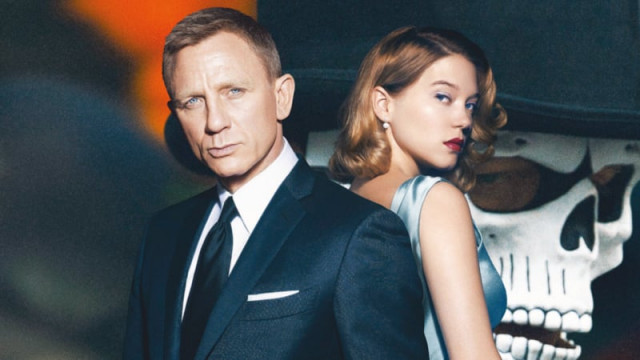Film review: Spectre - A loose bond
The 24th film of the James Bond franchise, Spectre, falls prey to sketchy story and patchy screenplay

The 24th film of the James Bond franchise, Spectre, falls prey to sketchy story and patchy screenplay.
It is not the only spectacular sequence in Spectre, the 24th official Bond film in the franchise that spans more than five decades. The film is a number of stupendous sequences shot with perfection in some of the most picturesque locations in the world. Unfortunately, these sequences, albeit great individually, do not add up to a worthy film. The sketchy story and patchy screenplay fail to tie the flawless sequences into a coherent film. A number of the set-pieces, designed to evoke nostalgia for ‘60s Bond films, serve to remind one of the guilty pleasures that earlier Bond films afforded viewers and how Spectre fails to deliver the same.
Spectre is a very long, listless and tiresome film that lacks grace, continuity and romance. And it is very boring.
Spectre sends Bond on a global chase, triggered by a cryptic message from former boss M (Judi Dench), searching for super villain Franz Oberhauser (Christoph Waltz) who heads the nefarious organisation, Spectre. While his new boss M (Ralph Fiennes) struggles to defend the continued need of the Double-O programme in London, Bond follows Oberhauser’s trail from Mexico to Italy to Austria to Morroco, romancing two ladies — Lucia Sciarra (the voluptuous and grossly underused Monica Bellucci) and Madeleine Swann (Léa Seydoux) — and fighting three villains — Sciarra, Mr White (Jesper Christensen) and Mr Hinx (Dave Bautista) — along the way. Bond’s eventual face-to-face meeting with Oberhauser is a letdown; the revelation of the implausible grudge that the villain holds against Bond and his true identity is neither thrilling nor a surprise.
Spectre is the fourth Bond film featuring Craig and the final one in a set that was designed to rebuild the entire Bond franchise by redefining the history, psychological make-up and personality of the secret agent, and by reintroducing elements of his world, in order to meet the intellectual, cultural and entertainment needs of 21st Century moviegoers. The film fails spectacularly at tying the loose ends of the threads that were first introduced in Casino Royale (2006) and subsequently explored in Quantum of Solace (2008) and Skyfall (2012). Spectre’s forced connections to its three predecessors are both implausible and inelegant. It is an unworthy finale to a wonderful set that included Casino Royale, the finest film of the franchise.
Bond films, like a lot of action movies, cannot and do not need to stand up to real world scrutiny. They only need to have a semblance of truth in the fantastic world they depict. Viewers happily invoke the suspension of disbelief required to enjoy these movies, but Spectre demands more. It needs the complete cognitive estrangement of viewers and a total leave from intelligence and common sense to be enjoyed. In a world plagued with religious battles, environmental threats, political uncertainties, nuclear proliferation, health scares, increasing poverty and escalating hunger, the world of Bond is increasingly irrelevant and unbelievable. It is difficult to believe in the existence of a single villain who holds power over the entire planet and can yet be taken out by an agent representing an empire over which the sun set a very long time ago.

Published in The Express Tribune, Sunday Magazine, November 22nd, 2015.



















COMMENTS
Comments are moderated and generally will be posted if they are on-topic and not abusive.
For more information, please see our Comments FAQ